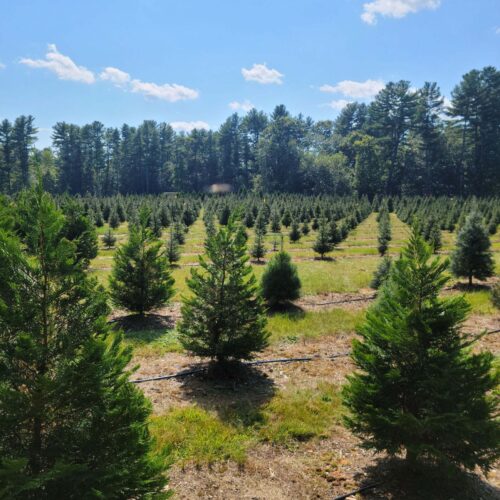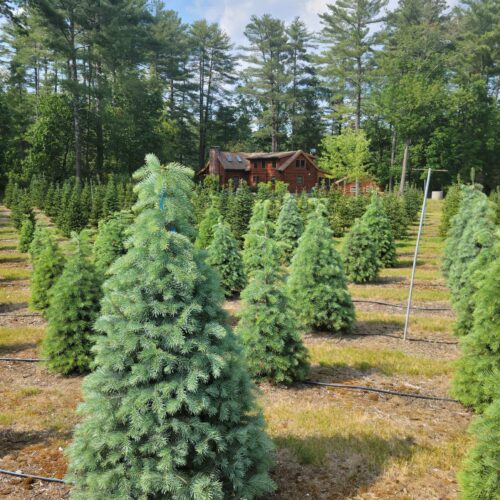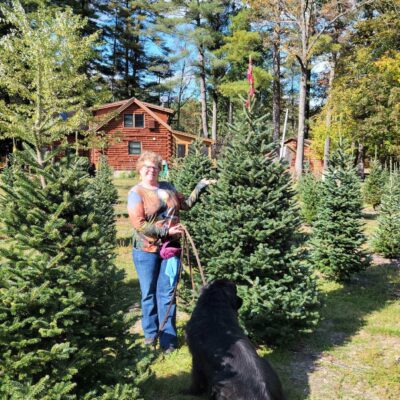In the time before the common era, ancient people equated the winter solstice (to when night and day were equal in length), as a celebration for the suns’ return. The fading sun was equated with dying: plants browned, the light faded and days, colder. However, some plants remained green. These evergreens were symbol and hope of life, and the promise of its return to the world. The Arborvitae, an evergreen, has a name literally meaning “tree” and “living.” The use of evergreen trees, garland and wreaths were an ancient symbol of life. The wreath symbolizes the circle of life without beginning or end.
But how did an evergreen tree become the Christmas tree? Some traditions hold that the tree represented the “tree of paradise” from which Adam and Eve ate the forbidden fruit. It was the German people that were credited for creating the tradition of the Tannenbaum. The earliest legend dating to 732 AD involved St. Boniface evangelizing Germany. The legend has it that pagans danced around an oak tree in honor of Thor. The oak was cut down by St. Boniface, and beside the oak stump grew a young fir tree, which then became the symbol for Christmas. Folklore also has it that Martin Luther, the protestant reformer, on his way home one evening was astounded by the stars lighting the tops of the evergreen trees, and was so inspired of the beauty of the heavens, he brought it home, decorating a cut tree with candles.

Conifers growing with an excurrent form (that is, with a strong leader) and triangular form is thought by some to symbolize the trinity. The earliest trees decorated for Christmas are thought to have been in the renaissance era of Northern Germany and Livonia, dating between 1441 and 1514.
German settlers brought the Christmas tree to Pennsylvania in the 1830s, though the custom was suspect by Americans of the time. It hinted of pagan culture, which of course is where it had originated! As early as 1659, the General Court of Massachusetts made it an offence to decorate at Christmas. The precedent continued into the 19th century until German and Irish immigrants undermined the puritanical law.
By the 1890s, ornaments were coming into America and decorating began to take on a measure of popularity. In the earth 20th century, Americans were decorating with homemade ornaments, while German-Americans were decorating with apples, nuts and marzipan cookies. The star placed at the top of the tree represents the Star of Bethlehem. Today, the Christmas tree of one sort or other is found throughout the globe.

Evergreens commonly used as Christmas trees include spruce, fir, Douglas fir and pine. It generally takes anywhere from 7 to 8 years to grow a tree to harvestable size. In Europe some of the trees used include:
- Norway spruce
- Serbian spruce
- Scots pine
- Stone pine
- Swiss pine
In North America, some of the trees grown for Christmas include:
- Douglas fir
- Balsam fir
- Frasier fir
- Grand fir
- White fir
- Pinion pine
- Jeffrey pine
- Scots pine
- White pine
Some fun facts:
- Over 1,000,000 acres have been planted with Christmas trees
- Christmas trees are grown in all 50 states
- 98% of all Christmas trees are grown on farms
- A cut tree will absorb a quart a day of water in the first week
- The first community Christmas tree was set-up in NYC in 1912
- The first tree displayed at Rockefeller Center was during the Great Depression
- Franklin Pierce, the 14th President of the United States brought the Christmas tree to the White House
- Since 1966 the National Christmas Tree Association has given a tree to the President and his family
- Thomas Edison’s assistants came up with the idea of lights to decorate the Christmas tree
Aside from its symbolic connotations, firs (such as Balsam and Douglas fir) release fragrant terpenes, often associated with the season. Such pleasant sensibilities may (and hopefully does) bubble into good will and peace this holiday season!
That will do it for us for the year! Thank you for joining me for a year’s worth of blog posts on subjects I’m so passionate about.
Join us in 2024 when we get back to planning for gardens.
~ Signing off for now, Joe



